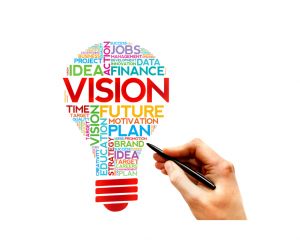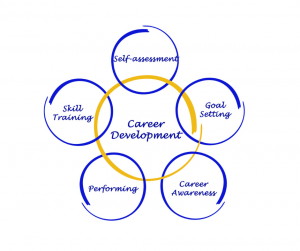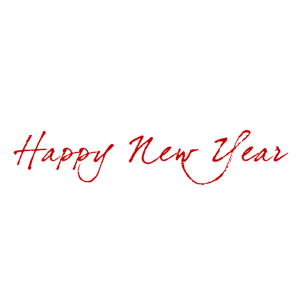 We’re now on our second month into a new year; however, many things don’t feel “new,” especially when it comes to our work environment. Are you still working virtually? What have you learned over the last 10 months? Are we better equipped to go back into an office setting, or has our “new normal” become how we wish to work?
We’re now on our second month into a new year; however, many things don’t feel “new,” especially when it comes to our work environment. Are you still working virtually? What have you learned over the last 10 months? Are we better equipped to go back into an office setting, or has our “new normal” become how we wish to work?
According to FlexJobs, A Gartner survey of company leaders found that 80% plan to allow employees to work remotely at least part of the time after the pandemic, and 47% will allow employees to work from home full-time. In a PwC survey of 669 CEOs, 78% agree that remote collaboration is here to stay for the long-term.
So, is this a good thing or a less than desirable side effect of the pandemic?
It turns out that in general, managers are discovering that their employees are just as productive—if not more—working remotely. However, this begs the question of how workplace relationships are adapting. Sure, there’s wonderful technology to help us, but have we lost the human connection? If so, what does that mean for our careers and the organizations we work for?
Having to adapt so quickly to such a major change was a challenge for many. When the dust settled, some surprising information came to light:
Remote workers are 35 to 40 percent more productive than those in-office.
Remote workers express greater job satisfaction (57 to 50 percent) versus in-office employees.
What are some reasons for these positive changes?
- Fewer interruptions
- More focused time
- Quieter work environment
- More comfortable workspace
- Not being involved in office politics
All of that makes sense, right? But how do we really feel about not being able to pop into our colleagues’ offices when we need to? Do we miss the interaction, having lunch together, participating in in-person meetings? Does it really make a difference?
When handled efficiently, most feel it does not make a difference. Having regularly scheduled team meetings or check-ins with managers goes a long way in keeping momentum going, projects being completed on time, and general accountability in place.
These positives are what long-term remote workers and entrepreneurs have known for a long time. A little flexibility lends itself to a more dedicated worker, and the routine of going to the office doesn’t necessarily make for a more productive environment. I can’t think of a single person who misses office politics, sitting in traffic, or constant interruptions.
Is it the wave of the future? Perhaps. Can something better for humankind be done with these office buildings? Possibly. Can we keep perfecting the virtual environment and the remote interactions with our colleagues? Time will tell.
We’re interested to know about your experience working virtually. Would you be happy to continue doing so, or you are waiting patiently for the day when you can return to your workplace? If you would like to explore this or any other concept about your working environment through the coaching process, please visit my website at: www.mbrownassociates.com
 There’s something special about the end of one year and beginning of another. It’s not unlike a fresh start or that “new car smell” so to speak. We’re presented with the opportunity to map where we’ve been, where we stand, and where we’re going. There are many tools to accomplish this, but the classic Vision Board is one of the best. My blog today focuses on making vision boards work for you—and there’s no better time than the start of a fresh new year!
There’s something special about the end of one year and beginning of another. It’s not unlike a fresh start or that “new car smell” so to speak. We’re presented with the opportunity to map where we’ve been, where we stand, and where we’re going. There are many tools to accomplish this, but the classic Vision Board is one of the best. My blog today focuses on making vision boards work for you—and there’s no better time than the start of a fresh new year!
What is a Vision Board?
By definition, a vision board is a methodology to create a visual representation of one’s goals, based on the theory that physically seeing this repeatedly helps bring motivation, direction, and unleashes possibility. It’s a powerful tool that reinforces the theory that our thoughts are powerful and visualization of achieving goals is part of achieving them. Athletes, for example, can draw on the power of vision boarding to manifest their goals. Entrepreneurs also find value in this tool as a way to chart their business aspirations. You’ve heard the adage, “Energy goes where attention flows,” right? This is the premise in a nutshell.
How and why do they work?
We all know we can train our minds; the brain itself, though, is more malleable then we might imagine. We can in fact train our brains for success using tools such as a vision board. Our brain has this ability due to process called neuroplasticity, which is the ability to learn, adapt, and in essence rewire itself. It’s what allows people to recover from traumatic injuries. Surely, if it’s powerful enough to do that, our brain can help us reach our goals, right?
Aside from the scientific point of view, the simple concept that vision boards are a tool to unleash our potential is one that we can utilize, be it for career, self-improvement, or personal goals.
Who needs a Vision Board?
We can all benefit from a vision board, whether you’re a student, an entrepreneur, a manager, or brand new to the job market. Everyone can use one in their personal life in regard to relationships, aspirations, self-improvement, etc. The possibilities are limitless.
Creating your Vision Board
You’ve decided to create one – now what? The first step is to do a lot of introspection and self-reflection. What goal(s) are you striving for? What dreams do you wish to bring to reality? There are plenty of helpful free worksheets to help this process along.
Next, decide if you will create a physical or digital vision board—or both. How do you respond best to visualization? By being able to look at, touch, and see a physical product? Or, does a phone or laptop background speak to you? Perhaps, if you decide to create a physical vision board, you can take a photo for your phone and laptop backgrounds. There are also apps for this purpose. Remember, the more you see it, the more it ingrains into that malleable brain of yours.
You’ll want to draw from variety of images that are powerful to you—people that are important, places you love, and words that inspire you to achieve goals. It can be physical things such as a cottage at the beach or a classic car, and it can be images of how you want to make a difference in your community, or a comfortable life with less stress. It can and should be a little snapshot of your desires in relation to your goals, and it doesn’t have to be anything fancy. Words and images cut from a magazine work just fine. Maybe there’s some original artwork you can add, or photography. It’s really only limited by your imagination. Think postcards of a favorite destination, your favorite quote, a graphic depicting your goal. It’s those images and words that speak to you and create a spark when you see them that’s important.
My Vision Board is assembled—now what?
The key is to place your vision board where you can see it daily. One good suggestion is to look at it twice a day, perhaps at the beginning and end of your day, for that visualization reinforcement it’s intended to create. By your desk in your home office or by your bed are two good places to place it. If it’s a background on your phone, you’re seeing it many times per day. Whatever works for you and keeps those goals top of mind is an individual preference—just make sure you’re viewing it regularly.
Should I update my Vision Board?
In short, yes; goals can change and circumstances can shift our plans. The idea is not to give up on your original goals, but to be fluid and recognize when things have taken a different direction. Let’s face it, sometimes we make powerful changes in our life’s journey that will serve us better, and it’s important to include these on your vision board. They are easy to change—paste on a new picture, remove what is no longer a goal, and reset your intentions as needed.
Free Tools for Vision Boards
Check out these great resources and remember, as with anything, the key is getting started and focusing. Take the time to do this during the holiday season as we approach 2021 – you’ll be glad you made this wise investment in yourself!
31 Free Vision Board Printables to Inspire Your Dreams
Jack Canfield’s Vision Board App
Create a Virtual Digital Board with PicMonkey
And in full disclosure, creating vision boards has been a very powerful tool for me as well as my clients. It really helps to keep us focused! I encourage you to try it and let me know what you discover!
I’d like to take this opportunity to wish my readers a joyous holiday season and a prosperous New Year! For more information on my services, visit my website at: http://mbrownassociates.com/
 Entering the last month of 2020, we have a great deal to reflect back on, particularly when it comes to our careers. The changes in how we successfully navigate the workplace have been vast, and for now, there doesn’t seem to be a definitive end to our new way of working. That said, we still need to consider developing our career amongst these unique circumstances. Today we’ll discuss some ways we can accomplish that, despite the current climate.
Entering the last month of 2020, we have a great deal to reflect back on, particularly when it comes to our careers. The changes in how we successfully navigate the workplace have been vast, and for now, there doesn’t seem to be a definitive end to our new way of working. That said, we still need to consider developing our career amongst these unique circumstances. Today we’ll discuss some ways we can accomplish that, despite the current climate.
Even though we’ve been caught up in the seemingly endless virtual meetings, we need to take time to evaluate not just how we’re working, but look at our current performance and future goals. It may seem counterintuitive at the present time when some days it may seem all we can do to accomplish our norm, but the time is right to do a lot of introspection. How has working from home affected your performance? Did you acquire new leadership skills or become more self-reliant in your home office? No longer surrounded by the office noise, have you discovered that you really love what you do—or discovered that it’s time to change directions? It’s just you working away solo now—you can be honest with yourself. Express your feelings by journaling or whatever notetaking system works best for you.
Self-study
Once you’ve laid your thoughts out, it’s time to formulate a plan which includes the necessary education and certifications. To that end, you may not be aware of how many free or low-cost opportunities are at your disposal. Let’s take a look at some resources:
Certifications You Can Obtain for Free! From AES Certification to Project Management, check out these great ideas: https://www.jobscan.co/blog/5-certifications-add-resume-free/
Recent College Graduate? Check out Handshake, a job portal that has become a leading community for those early in their career: https://joinhandshake.com/
Continue to Build Your Tribe: Take advantage of the virtual meetings to introduce yourself with a brief “elevator speech” if you will, and actively engage with other meeting/event participants. Pay special attention to opportunities to share contact information. Check out some of these great apps to make your virtual business card:
HiHello: https://www.hihello.me/
Haystack: https://thehaystackapp.com/
Inigo: https://inigoapp.com/
Managing Your Mind: The very habit of practicing mindfulness is a deliberate action, and one that can not only help us through current career challenges, but in our personal development as well. Here’s a mindfulness quiz that can help you evaluate where you are in the mindfulness sphere. After your score is tabulated, a list of valuable recommendations are given. https://greatergood.berkeley.edu/quizzes/take_quiz/mindfulness
Learn, grow, and document: Be proactive and go a step above and beyond (perhaps use that time was formerly spent commuting). Use tools like Google Drive, Evernote, etc. to document what you have done in the way of continued development so they are easily accessible for future reference. In the event you’re asked to perform a self-evaluation, you’ll have this information at hand. As far as sourcing the courses, you’ve undoubtedly heard of Udemy, Coursera, LinkedIn Learning, and other major players. Here’s some interesting alternatives:
A Collection from The Muse – 41 Free Classes from Various Sources: https://www.themuse.com/advice/43-classes-you-can-take-right-now-to-advance-your-career-and-theyre-free
Free Professional Development Courses: https://www.futurelearn.com/subjects/business-and-management-courses/professional-development
500 Free Learning Resources for Nonprofit Professionals: https://www.nonprofitready.org/
Performance Assessments
Another method that can be utilized is the 360-degree Performance Review, which can be adapted to the remote office situation. This is where the employee, managers, subordinates, and a cross-section of peers perform a review, as well as extending this to outside sources such as vendors, associated companies in different cities, etc. In the remote situation, this is a great tool to assess communication, conflict resolution, and interpersonal skills. Communication can be a bit off kilter in our virtual world, and this assessment reinforces its importance. There are a variety of tools that can be utilized including Doodle or Survey Monkey polls, or even the poll feature in Zoom. Managers can take the existing performance evaluations and with some creativity adapt them to the remote learning environment. With continuous improvement in mind, this exercise is extremely valuable.
Continuous Improvement of Soft Skills
Now more than ever, we need to master our soft skills so that we can communicate effectively from a distance. Problem solving is paramount, and being able to devise adaptable solutions allows the team to flourish. Strong flexibility and adaptability skills will serve us well during the pandemic and going forward in our careers. We had to switch gears so fast with the onset of the pandemic that we just did whatever we needed to do to get our work done; now we can refine processes such as responding to new challenges, continuous learning, and even some novel improvisation when things in our virtual world don’t go as planned. By encouraging employees to stretch their creativity and step outside their comfort zone, you may find a plethora of great ideas to strengthen the sense of community while accomplishing goals.
There is so much to be learned from the times we are faced with in regard to continuous career development. If you’d like to speak with Marshall about coaching services, please contact him at 202-669-2065. Visit the website for more information, and follow us on our social channels. www.mbrownassociates.com.
Wishing you a healthy, safe and successful new year!
 It’s another Monday morning. For the home-based employee, it’s another week of working virtually. Another week of trying to juggle kids, our career, and perhaps a barking dog or curious cat while we’re maintaining a professional atmosphere in which to complete our work. Your home isn’t designed to be an office, but overall, you’re managing fairly well.
It’s another Monday morning. For the home-based employee, it’s another week of working virtually. Another week of trying to juggle kids, our career, and perhaps a barking dog or curious cat while we’re maintaining a professional atmosphere in which to complete our work. Your home isn’t designed to be an office, but overall, you’re managing fairly well.
A PwC survey in June found that 44% of employers felt employees were more productive working at home during the pandemic, vs. 31% who believed they were less productive and 25% who felt work output was roughly the same. How would you categorize yourself?
There are many factors at play here to be your most productive. The key is in planning as much as you possibly can, and this means as a family. Women are particularly stressed and job statistics show they are increasingly leaving their jobs to provide childcare and assist with virtual learning. For single parents, the stress is even greater as there’s no partner to balance things out.
However, the world keeps churning. Bosses still expect top quality work and the same dedication they were accustomed to pre-COVID-19. Is this possible, you ask?
Yes, in fact, it is. It just takes a lot of creativity.
Consider:
According to a Gallop poll, 1 in 4 adults is working entirely from home. Statistics vary, but approximately 50 percent of students are participating solely in online learning, with the remainder in some sort of hybrid arrangement. That’s a lot of people home together all day trying to accomplish what was once done with the support of others in a designated environment. It’s no wonder there’s stress!
We invite you to grab a cup of your favorite coffee or tea and explore these tips and resources:
- Dual working couples can and should stagger their day. Finding a unique solution that is amenable to your family while meeting your supervisor’s expectations is crucial. Communicate this information to your supervisors and work together to create a realistic plan.
- Respect each other’s space, both for adults and children. Ensure everyone has the best working and learning environment possible. Take this very seriously to minimize frustration.
- Outsource what you can afford (grocery delivery, housekeeping, etc.) Consider child care or utilization of a “pod” schooling situation for those days or even a week when you must be in a conference or nonstop meetings. Allow yourself the ability to give proper attention to the task at hand, especially if you are a presenter or you are participating in continuing education.
- Curb unrealistic expectations and let go of perfection. If the laundry is a bit piled up or the grass needs mowing, don’t be so hard on yourself. It will get done. You need less stress, not more. Prioritize.
- Demonstrate compassion for others and practice understanding. We’re all in this together. Be creative in solutions to help each other during this challenging time.
- Practice your best self-care. We all know what we need—proper sleep, exercise, eating right. We also intuitively know what makes us feel our best on a very specific level. Whether it’s yoga, walks in nature, reading for an hour each day, taking particular supplements, or sticking to a certain nutrition, continue to make that activity a priority. As the saying goes, “You can’t pour from an empty cup.” Take care of yourself both emotionally and physically.
- Set boundaries. Turn that laptop off and put the phone up for a bit. Resist the urge to check emails during family time. If you’re fortunate enough to have a home office, shut the door when the workday is complete. Learn to say no, and stick to it. Prioritizing will bring clarity to the things that can be postponed or even eliminated from daily life right now. Saying no tends to make us feel guilty, but for our own mental and physical wellbeing, it’s a necessity. Make your decisions and stick to them.
- Have a plan for emergencies such as sick children or your own need for a sick or personal day off. Have a plan for when (not if) your internet has an issue or there are other technology issues. We all run into this from time to time. How can we adapt and pivot and still get our work done?
- Remember to advocate for yourself. This is something that a virus can’t diminish. Maybe you were in line for a promotion earlier in the year, or you were facing a particular challenge. Again, communication is key to allow your supervisor to see that you haven’t missed a beat and you’re ready to tackle anything from a promotion to advancing your skills to dealing with sensitive issues with coworkers.
- Recognize that this is temporary. Institute practices that will help you look back and remember how your family conquered this challenge successfully.
Ten Resources to Navigate our COVID-19 World:
- The Cloud. If you don’t already utilize Google Drive, Dropbox, One Drive, or the like for your work projects, now is the perfect time. By sharing documents securely, you can work together efficiently and in real time. Google has an entire suite of products to help: https://www.google.com/docs/about/
- Productivity software. From Monday to Microsoft Teams to Trello and all the others in between, these help keep us on track for virtual or on-site tasks. Most of these platforms have free trials. Try: https://monday.com/product/
- Lost your job due to the pandemic? Spend time on not only the popular job boards such as Indeed, but do some searching on LinkedIn. There are wonderful opportunities to be had, and the search feature is excellent. https://www.linkedin.com/jobs/
- Need help with health and human services in your state? Many resources are listed here: https://www.hhs.gov/programs/social-services/index.html
- Self-care apps have increased in popularity. Many suggestions are listed here: https://psychiatry.ucsf.edu/copingresources/apps#a
- Looking for some different educational opportunities for your children? Try these:
- Virtual Field Trips: https://www.discoveryeducation.com/community/virtual-field-trips/?fbclid=IwAR3xAaEuF9L6zycO_xBL5Nd8lhk63Dnyqp6z30iMGkMS_E2ijMiEOmGH_WY
- Keep everyone learning with Kahn Academy: https://keeplearning.khanacademy.org/
- Stream stories for free: https://stories.audible.com/start-listen
- Nature and animal webcams from around the world: https://explore.org/livecams
- Looking for some support, even for a few hours? Try https://www.care.com/
- Childcare specific resources by state: https://www.childcare.gov/covid-19
- COVID-19 Prevention in the Workplace: https://www.cdc.gov/coronavirus/2019-ncov/community/organizations/businesses-employers.html
- Coping with COVID-19 from the National Institutes of Health: https://www.nimh.nih.gov/health/education-awareness/shareable-resources-on-coping-with-covid-19.shtml
What are your favorite tips for juggling work and home life during COVID-19? Please share in the comments. We’d love to hear your insight!
Coaching can play a part in helping you identify, think through, and put sound practices into place. If you’d like more information on our services, please visit www.mbrownassociates.com and follow us on Facebook at https://www.facebook.com/MarshallBrownAssociates. Interested in making an appointment? Call Marshall at 202.669.2065
The best way to have a good year is by living life on a daily basis, letting the good days accumulate, one by one. And it doesn’t have to be New Year’s to resolve to have a good year. Start anytime. Today, for instance.
- Take time, slow down. Be present in your life and mindful of the present.
- Care for your body, eat well, exercise, treat yourself to loving, nurturing self-care.
- Spend quality time with family and friends. Communicate, keep in touch. Say I love you. Tell people you appreciate them.
- Take time throughout the day to renew yourself. Take a walk, read a poem or a good book, listen to music (really listen); bring beauty into your life. On a monthly basis, take a whole day for yourself — play, treat yourself to something you want to do; retreat from your daily life. Mark these special days on your calendar (in ink) so you’ll be certain to take them.
- Clean up what needs to be cleaned up. Make amends, fix what’s broken, clear away clutter, forgive what needs to be forgiven and let go.
- Commit to a project you really want to do or to learning something new or attaining something you want. Commitment is the first step. Then set achievable goals and work toward them on a daily basis.
- Give yourself to a cause, volunteer at a nonprofit organization, a community group, your church or lend a hand to an individual or family who could use your help.
- Practice your spirituality in whatever form you express it, on a daily basis.
- Laugh every day.
- Take time to dream.
Wishing you a healthy, successful and joyful 2017!
To Your Success,

